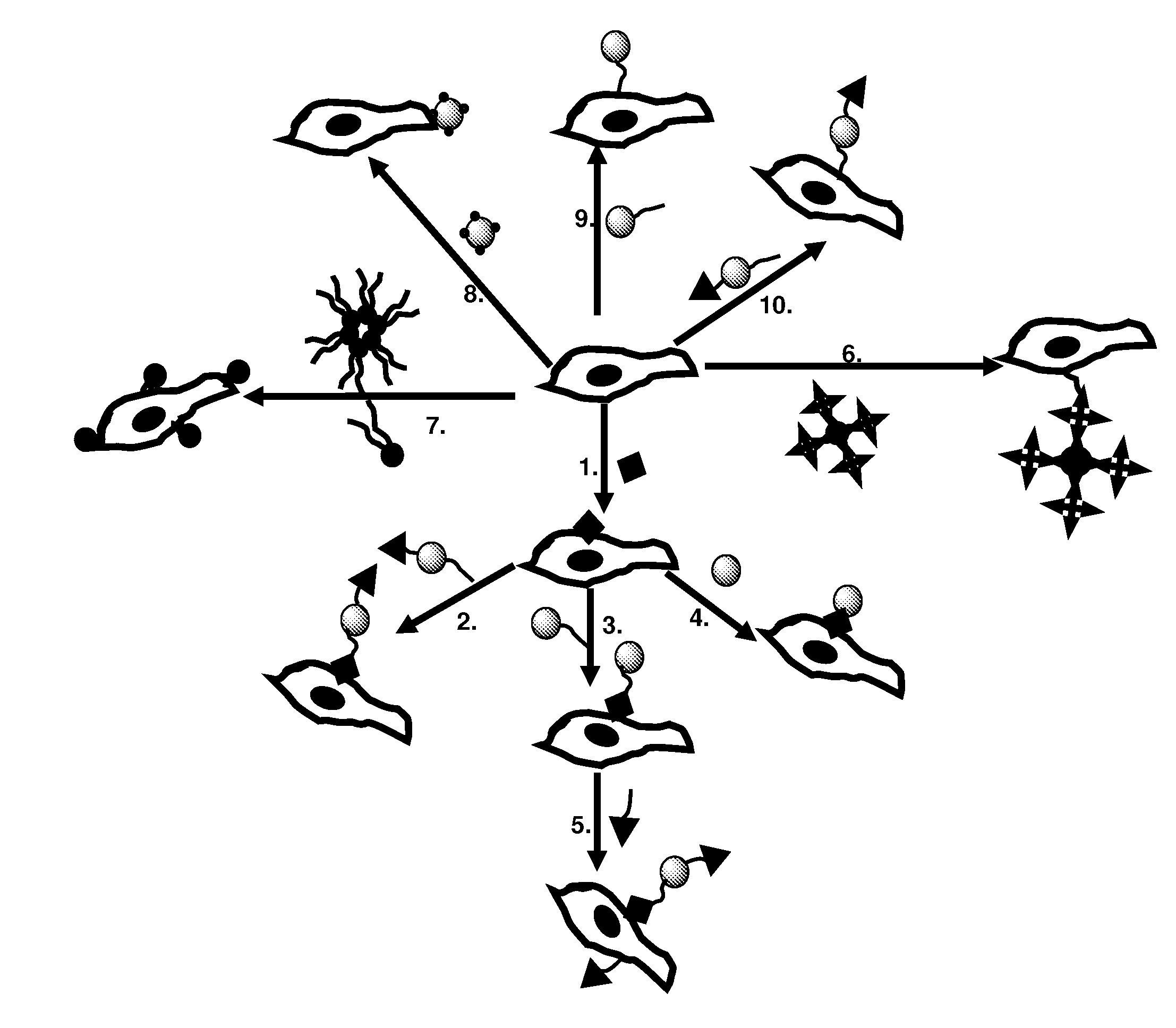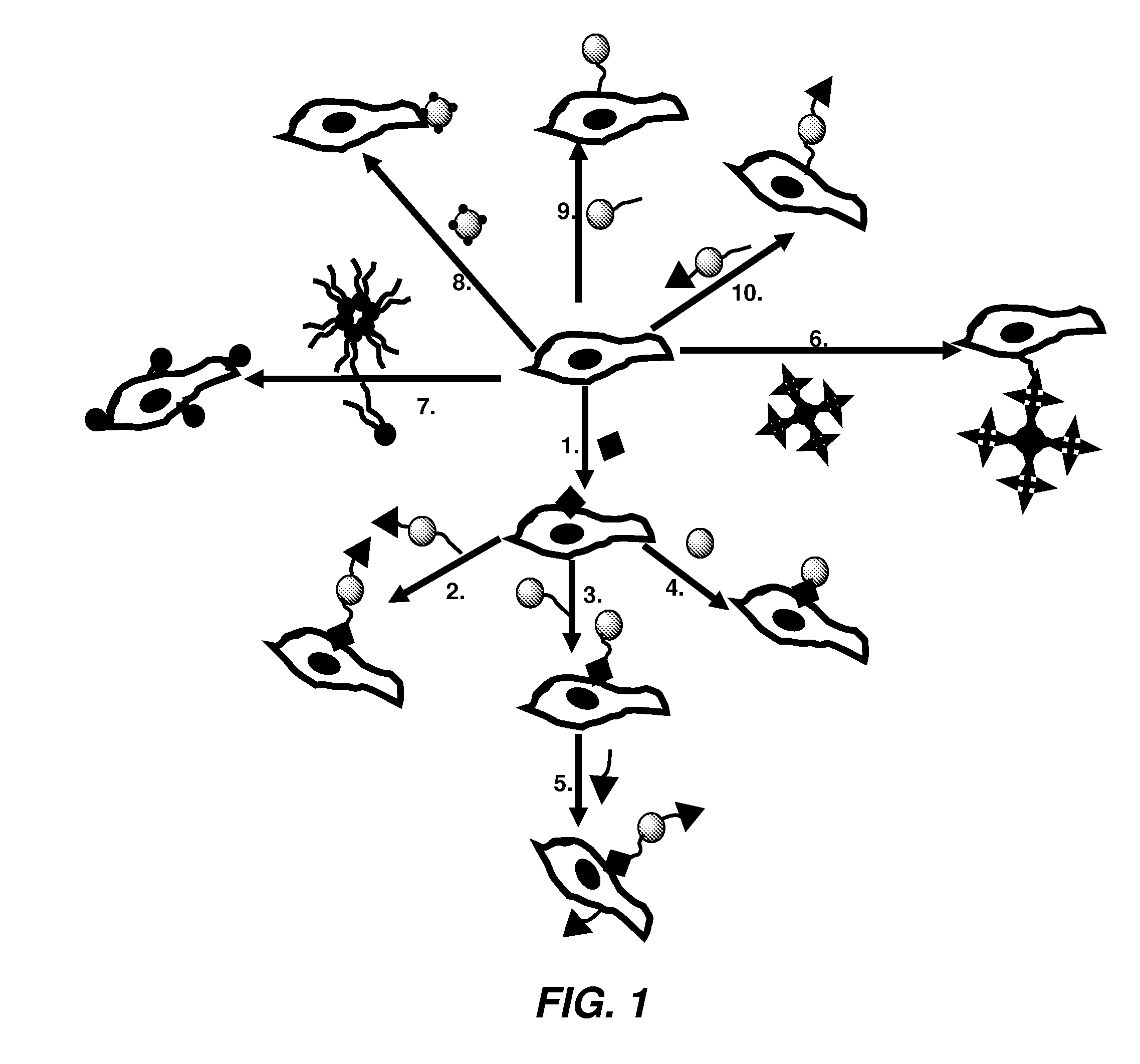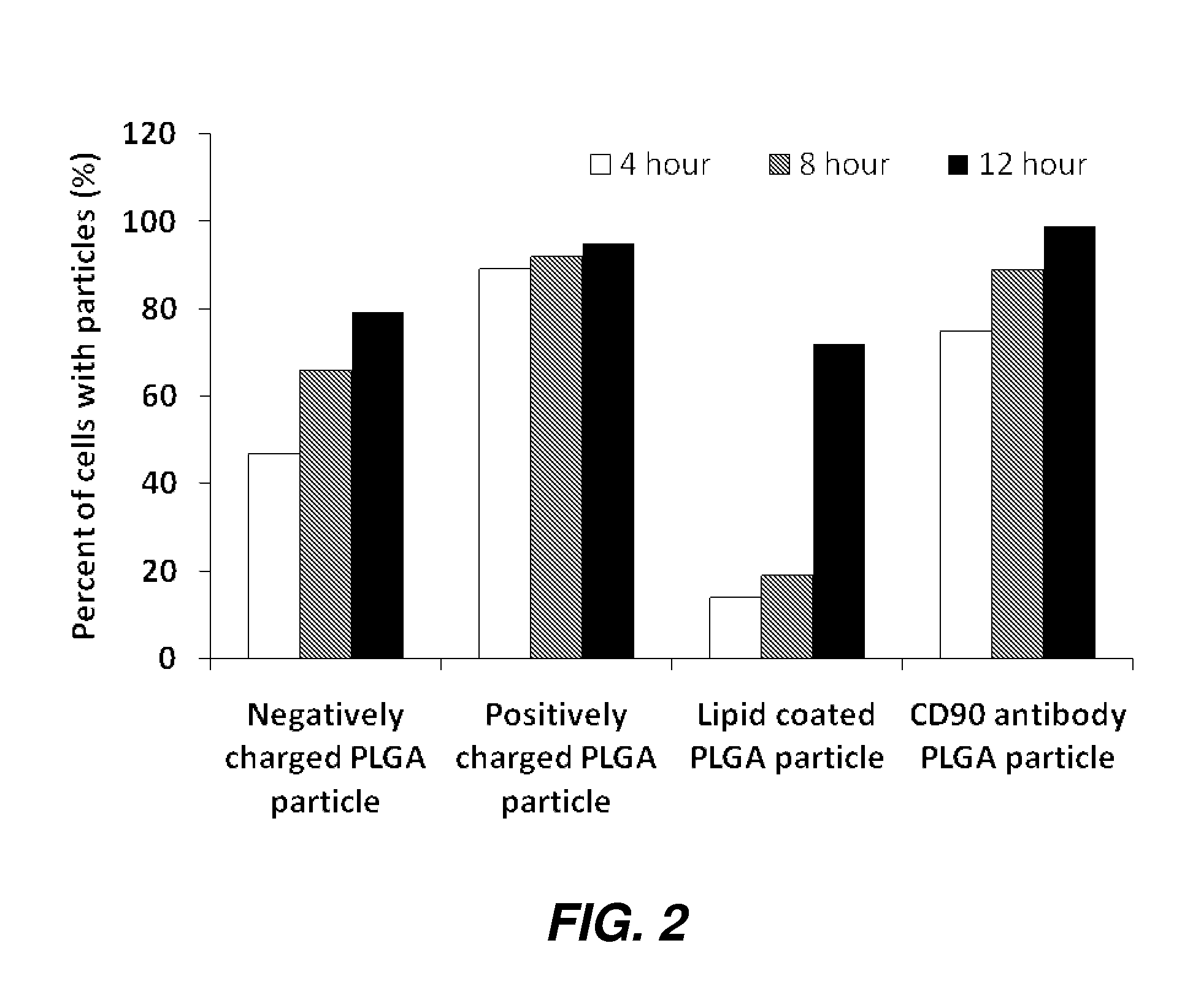Cell Membrane Engineering
a cell membrane and engineering technology, applied in the direction of granular delivery, powder delivery, unknown materials, etc., can solve the problems of unreachable target, substantial toxicity and risk to the health of patients, and uncontrolled releas
- Summary
- Abstract
- Description
- Claims
- Application Information
AI Technical Summary
Benefits of technology
Problems solved by technology
Method used
Image
Examples
example 1
[0194]Described herein is a non-limiting example of how a cell can be modified to improve cell targeting. Specifically, a targeting agent was attached to the cell surface, which is able to induce cell rolling as demonstrated by in vitro experiments.
Modification of Human Mesenchymal Stem Cells (hMSCs) by Sialyl Lewis X (SLeX)
[0195]The modification of hMSCs was performed to chemically attach the SLeX to surface of the cell membrane. Biotin-Streptavidin conjugation was utilized to chemically incorporate the SLeX moiety of the cell surface. The free amine groups present on the surface of the cells were allowed to react with N-hydroxy-succinimide group of Biotinyl-N-hydroxy-succinimide to biotinylate the cell surface. This step was subsequently followed by reacting the biotin moiety of the cell surface with a streptavidin molecule. The strong interaction between biotin and streptavidin allows the streptavidin molecule to be immobilized on the cell surface. The streptavidin is then reacte...
example 2
[0219]The methods described herein in Example 2 can be used for targeted delivery of any cell type including, for example stem cells and differentiated cells. Activated dendritic cells (DC) presenting specific antigens can be targeted to the lymph nodes to improved vaccination strategies43. In addition, targeted delivery of T-cells or other immune cells can be performed by the methods described herein. Encapsulation of drugs or drug delivery devices (e.g., particles) into the cell surface is also useful to control the cell microenvironment and to deliver drugs directly to the cell (over long term). This is particularly useful for drugs that are quickly cleared, or inactivated, by interaction with plasma or other biological entities. Sustained drug delivery can be achieved through covalent immobilization to the cell surface or through incorporation by non-covalent methods described herein.
[0220]This method describes one embodiment of the methods disclosed herein and involves the cova...
example 3
Cell Surface Functionalization of Cells in Suspension
[0230]Modification of Human Mesenchymal Stem Cells (hMSCs) by Sialyl Lewis X (SLeX) in Suspension Mode
[0231]The covalent modification of hMSC by reacting N-hydroxy-succinimide group of Biotinyl-N-hydroxy-succinimide in suspension offers an opportunity to modify the entire surface of the cell whereas in adherent mode approximately half of the cell surface is exposed during the surface modification. Thus, the distribution of biotin and conjugated moieties is more uniform throughout the cell membrane when modifications are performed on cells in suspension. This can increase a cell's efficiency for targeting and homing. Specifically, the attachment of SLeX while cells were in suspension imparted a more robust rolling response compared to modifications performed on adherent cells (when reagents were used at the same concentrations).
[0232]Typically, hMSCs were cultured in a T75 flask up to 90% confluence in hMSC expansion media (15% Fet...
PUM
| Property | Measurement | Unit |
|---|---|---|
| Time | aaaaa | aaaaa |
| Size | aaaaa | aaaaa |
| Size | aaaaa | aaaaa |
Abstract
Description
Claims
Application Information
 Login to View More
Login to View More - R&D
- Intellectual Property
- Life Sciences
- Materials
- Tech Scout
- Unparalleled Data Quality
- Higher Quality Content
- 60% Fewer Hallucinations
Browse by: Latest US Patents, China's latest patents, Technical Efficacy Thesaurus, Application Domain, Technology Topic, Popular Technical Reports.
© 2025 PatSnap. All rights reserved.Legal|Privacy policy|Modern Slavery Act Transparency Statement|Sitemap|About US| Contact US: help@patsnap.com



